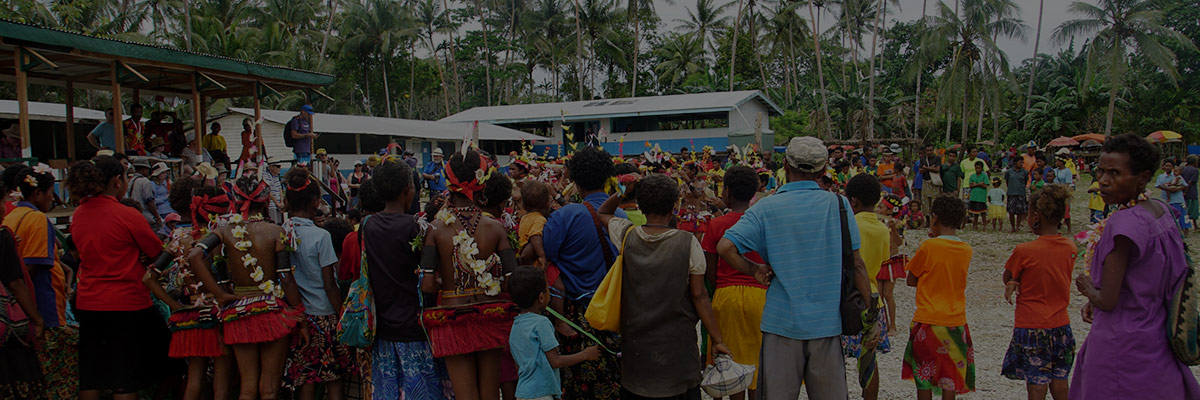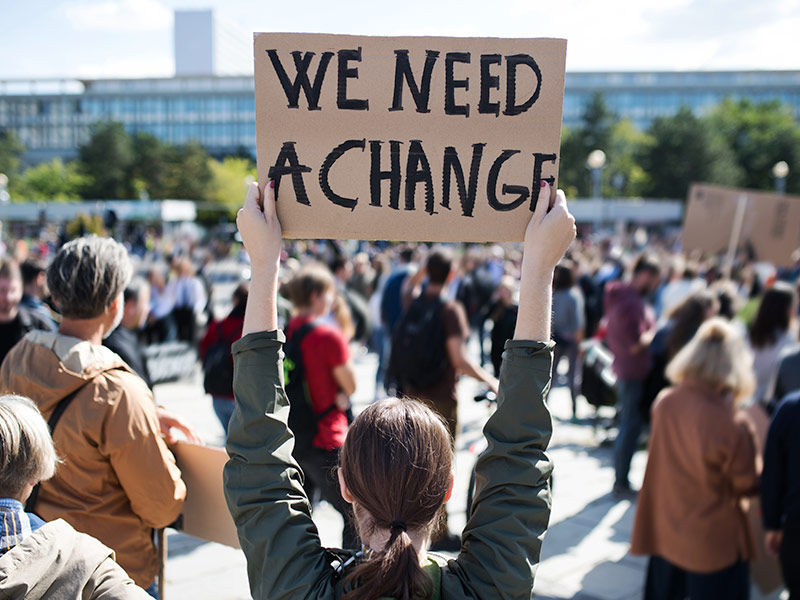Business Role
Expectation
Respect Human Rights
Businesses have a responsibility to respect internationally recognized human rights. This includes not causing, contributing to, or being directly linked to an adverse impact on human rights.
Provide or Cooperate in Remediation
When businesses cause or contribute to harms, they should provide or cooperate in remediation through legitimate processes.
When companies are directly linked to adverse human rights impacts through their operations, products, or services by a business relationship, they are not required to provide for remediation, though they should use their leverage to prevent and mitigate adverse impacts.
For more information on when a company should provide remedy, read our report Seven Questions to Help Determine When a Company Should Remedy Human Rights Harm under the UNGPs.
Prevent or Mitigate Harm
Businesses should take proactive measures to prevent or mitigate human rights harms before they occur rather than relying on paying compensation if/when harm has been done.
Establish or Participate in Effective Grievance Mechanisms
Companies should provide effective grievance mechanisms for potentially impacted stakeholders.
Grievance mechanisms must satisfy all effectiveness criteria under UNGP 31 and never be used to preclude access to remedy.
What Is Effective Remedy?
Effective remedy has both procedural and substantive aspects. For companies, merely providing access to their OGM is not enough; they need to also provide substantive remedy at the end of the remedy process.
Effective remedies integrate four key components, considered from the perspective of the affected rightsholder who has suffered the human rights harm and is seeking remedy:
- Accessible—Rightsholders should know of the existence of remedy and be able to gain access to it without inconvenience. Access can be through a company’s OGM or through another legitimate process.
- Affordable—Rightsholders can access remedy without too much expense. This will vary depending on affected communities and what they consider to be affordable.
- Adequate—Adequacy of remedies should be judged not only by the current needs of the rightsholder, but also their future long-term needs. Remedy agreements should also have some built-in flexibility to respond to harms discovered after the conclusion of compensation agreements.
- Timely—Timeliness will depend on the complexity of each case and what the rightsholder considers timely, given their circumstances. It is critical that claims are processed quickly as delays can result in the denial of justice.
The Five Elements of Remedy
Whether provided by the state or non-state company mechanisms, a remedy process should restore the rightsholder to the status they held preceding the harm and should be agreed upon and discussed with affected rightsholders. The five internationally recognized elements of remedy may be used alone or together in the remedy process.
1. Restitution
Restore, to the extent possible, whatever has been lost and return the rightsholder to the state before the abuses occurred.
Restitutionary remedy should avoid unjust enrichment and may mean taking something from the wrongdoer and restoring it to the rightsholder.
Where restitution is sought by the victims of corporate human rights abuses and is feasible, this may provide a more effective remedy than compensation or even the incarceration of wrongdoers.
Rightsholders are able to return to their place of residence from which they have been previously taken away or from which they were displaced.
Reinstating or promoting a woman to the position that she deserved after being dismissed from her job or denied a promotion due to pregnancy.
Business restoring the environment after it caused pollution, as part of the “polluter pays” principle.
2. Compensation
Money or other trade-offs for the cost of the harm.
Compensation is the most sought and granted remedy for business-related human rights abuses.
Compensation should be fair and proportional to the gravity of the harm suffered and never offered in lieu of potential criminal liability.
It is critical that affected rightsholders do not receive inadequate compensation owing to lack of information or power imbalance.
Money or fungible trade-offs.
Funds can be provided for:
- Lost opportunities, including employment, education, and social benefits.
- Material damages and loss of earnings, including loss of earning potential.
- Moral damage.
- Costs required for legal assistance, medical services, psychological services, and others.
3. Rehabilitation
Medical, psychological, legal, and social services to restore the victim.
Rehabilitation can be a vital remedy in many situations.
Rehabilitation encompasses processes and services that allow a victim of human rights violation to reconstruct their life and/or to reduce as much as possible the harm that has been suffered.
Psychological counseling for people who have suffered from sexual violence linked to business operations.
Vocational training to develop the skills required to take on another appropriate job for a worker injured in a factory.
Providing suitable land for people who have been displaced due to an infrastructure project.
4. Satisfaction
Cease the violation, acknowledge the harm, disclose the truth, provide an apology, and sanction those responsible.
Satisfaction can take multiple forms, from cessation of a continued human rights abuse, to a public apology, to civil administrative or criminal sanctions against the wrongdoers.
A genuine and meaningful public apology is a vital element of remedy to partly restore what cannot be compensated by money.
Businesses often hesitate to apologize for fear that doing so may be used to pursue legal claims.
Verification of facts and full and public disclosure of the events that occurred (ensuring disclosure does not cause further harm).
Public apology, including acknowledgement of the facts and acceptance of responsibility.
Commemorations and tributes to the victims.
5. Guarantee of Non-Repetition
Change policies and procedures to prevent future harms and/or take disciplinary action.
These efforts are aimed at preventing future abuses.
Remedies should be able to discourage not only a given actor, but also others, from committing the same or similar abuses in the future.
Can be a useful forward-looking component to avoid a repeat of a specific abuse, as well as prevent business-related human rights abuses generally.
Inserting appropriate human rights clauses in business contracts or settlement agreements.
Raising awareness about integrating human rights norms into business operations.
Introducing compliance programs.
Committing to undertaking due diligence.
The protection of human rights defenders.
The Changing Remedy Landscape
The remedy landscape is changing, with greater expectations that companies will provide remedy for harms they have caused and contributed to—even if those harms were in the distant past. There are increased calls by stakeholders for companies to remedy the impacts of legacy issues and provide effective remedy.
In September 2020, Rio Tinto was accused of environmental and human rights violations in a complaint which stated that an abandoned mine was leaking waste and poisoning rivers on the island of Bougainville. In July 2021, the company agreed to look into the impacts through an independent impact report.
Demands are also growing on companies to make reparations to address racial injustices, including concepts such as restitution and guarantees of non-repetition. For example, civil society groups called on Bank of America in June 2020 to pay reparations and recognize its role in the perpetuation of racial economic inequality. This followed the bank's announcement that it would commit US$1 billion over four years to address economic and racial inequality accelerated by a global pandemic, which critics said was not enough.
There is also an increase in resolving cases through lawsuits. While a lawsuit is an important driver and principled way to advocate, it can be costly and does not guarantee remedy on the ground through a fair, rights-compatible manner. The Business and Human Rights Resource Center recently launched a Lawsuits Database, which includes case profiles of the numerous lawsuits brought against companies to hold them legally accountable for human rights abuses. In response to the trend toward litigation, we are seeing wider participation from corporate legal teams, especially within companies that have been rocked by human rights tragedies. These teams are working to proactively address human rights issues, with the understanding that not doing so can have serious reputational and financial harms.
Some companies are establishing independent mechanisms (either on their own or as part of legal settlements) through which victims can lodge human rights claims, given that OGMs may not be best suited for resolving human rights claims because they may be insufficiently independent, transparent, and predictable. For example, in 2019, Gemfields settled a claim of human rights abuses in one of its mines, Montepuez Ruby Mine. The settlement agreement had three main elements, one of which included setting up an independent OGM to provide redress for any rightsholders found to have suffered abuse at the mine.
Five Recommendations for Company Action on Remedy
It is paramount for businesses to respond to the changing remedy landscape, fulfil their obligations under the UNGPs, and, in doing so, provide effective remedy for human rights harms they have caused or contributed to.
Companies should:
- Build capacity to provide meaningful and effective remedy when business activities have caused or contributed to harm and strengthen the remedy ecosystem where the company operates, ensuring pathways to remedy are available and accessible.
- Strengthen OGMs to ensure alignment with the UNGPs effectiveness criteria. In high-risk locations, companies should consider establishing independent grievance mechanisms for human rights claims.
- Strengthen stakeholder engagement practices to identify human rights issues and prevent them before they become human rights abuses.
- Apply a gender and vulnerable people lens in implementing decisions around remedy to ensure the company does not perpetuate or exacerbate discrimination against women or other vulnerable groups.
- Integrate human rights lawyers into human rights teams to facilitate relationships with the legal department and build awareness of the costs of unaddressed human rights risks and potential violations, changing stakeholder expectations, and consequences for inaction.
Get the Report
{report_downloads_fr} {tmpvar_download_fr} {/report_downloads_fr}Let’s talk about how BSR can help you to transform your business and achieve your sustainability goals.






